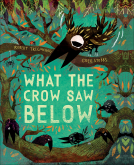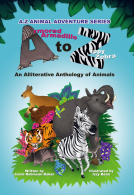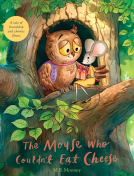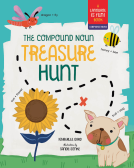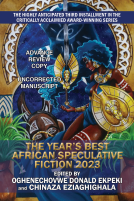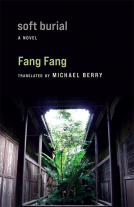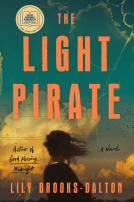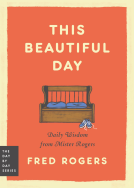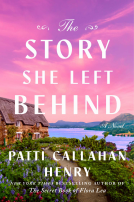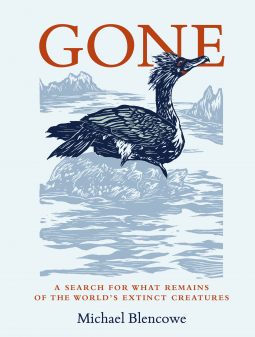
Gone
A search for what remains of the world's extinct creatures
by Michael Blencowe
This title was previously available on NetGalley and is now archived.
Send NetGalley books directly to your Kindle or Kindle app
1
To read on a Kindle or Kindle app, please add kindle@netgalley.com as an approved email address to receive files in your Amazon account. Click here for step-by-step instructions.
2
Also find your Kindle email address within your Amazon account, and enter it here.
Pub Date Apr 27 2021 | Archive Date Apr 22 2021
Quarto Publishing Group – Ivy Press | Leaping Hare Press
Talking about this book? Use #Gone #NetGalley. More hashtag tips!
Description
'Really, really well written' – CHRIS PACKHAM
Inspired by his childhood obsession with extinct species, Blencowe takes us around the globe – from the forests of New Zealand to the ferries of Finland, from the urban sprawl of San Francisco to an inflatable crocodile on Brighton’s Widewater Lagoon. Spanning five centuries, from the last sighting of New Zealand’s Upland Moa to the 2012 death of the Pinta Island Giant Tortoise, Lonesome George, his memoir is peppered with the accounts of the hunters and naturalists of the past as well as revealing conversations with the custodians of these totemic animals today.
Featuring striking artworks that resurrect these forgotten creatures, each chapter focuses on a different animal, revealing insights into their unique characteristics and habitats; the history of their discovery and just how and when they came to be lost to us.
Blencowe inspects the only known remains of a Huia egg at Te Papa, New Zealand; views hundreds of specimens of deceased Galapagos tortoises and Xerces Blue butterflies in the California Academy of Sciences; and pays his respects to the only soft tissue remains of the Dodo in the world. Warm, wry and thought-provoking, Gone shows that while each extinction story is different, all can inform how we live in the future. Discover and learn from the stories of the:
- Great Auk. A majestic flightless seabird of the North Atlantic and the ‘original penguin’.
- Spectacled Cormorant. The ‘ludicrous bird’ from the remote islands of the Bering Sea.
- Steller’s Sea Cow. An incredible ten tonne dugong with skin as furrowed as oak bark.
- Upland Moa. The improbable birds and the one-time rulers of New Zealand.
- Huia. The unique bird with two beaks and twelve precious tail feathers.
- South Island Kōkako. The ‘orange-wattled crow’, New Zealand’s elusive Grey Ghost.
- Xerces Blue. The gossamer-winged butterfly of the San Francisco sand dunes.
- Pinta Island Tortoise. The slow-moving, long-lived giant of the Galápagos Islands.
- Dodo. The superstar of extinction.
- Schomburgk’s Deer. A mysterious deer from the wide floodplains of central Thailand.
A modern must-read for anyone interested in protecting our earth and its incredible wildlife, Gone is an evocative call to conserve what we have before it is lost forever.
Available Editions
| EDITION | Other Format |
| ISBN | 9780711256750 |
| PRICE | $25.00 (USD) |
| PAGES | 192 |
Featured Reviews
Gone is a book about eleven animals that have gone extinct in fairly recent history. That’s the thing that struck me first, I think. Despite all the talk of endangered species that currently circulates, I had not truly realised that the past 300 years had seen such a wave, though really I shouldn’t have been surprised. The majority of these animals were wiped out during the European age of exploration, which not only did irreparable damage to other cultures, but to entire ecosystems.
Blencowe writes in a casual yet knowledgeable manner, charting the discovery and demise of each of the 11 animals, throwing in anecdotes that made me laugh, only to break my heart a few lines later as he describes the slaughter of Steller’s Sea Cow or the merciless industrialisation of San Francisco that caused the disappearance of the Xerces Blue butterfly. I think his style of writing is perfect for this book, which should reach not only those already interested and involved in conservation but also the general population. We as a species need to realise how our actions affect nature and the other creatures at our mercy, and this book is a great illustration of that. None of the explorers, miners, and settlers that hunted animals to extinction set out to do so, but they did it nonetheless. Blencowe truly drives this home in his chapter about the famous Dodo.
As much as I enjoyed reading this, imagining a world where these long gone creatures lived, and found the author’s style of writing thoroughly engaging, there is a real sadness that pervades the book. I often had to put it down at the end of a chapter and pay tribute to the creature that the world will never see again. The reality that we as a species caused these extinctions is repeated often on the pages, and it is hard to deal with the knowledge that we have yet to slow down. How soon will another book like this one be published, listing all the latest animals we’ve driven from the face of the earth? How soon will we ourselves start to feel the effects?
There is still an element of hope, though, that runs through Gone, which is one more reason it should be widely read. Though we may have brought about these extinctions, we are also more than capable of turning the tide on others, and this book is definitely a step in that direction. It is also full of beautiful illustrations like the one on the cover above, which truly bring to life the animals Blencowe writes about.
This short and poignant book takes the reader on a strange trip around the world, to mostly remote places of times gone by. The author visits places where some iconic species used to live. Sadly, these species are now extinct. Unfortunately, the list of species is much, much longer, but understandable it would be impossible to follow up on every single extinct species.
This is an insightful and readable book about natural history, the human impact on nature, and how we are all connected by nature. i highly recommend everyone to read this book to get a better understanding of the aforementioned things. The book brought these dead creatures alive in my mind, and I think that is one of the greatest appraises to an author of a book like this. Blencowe brought some species back from the beyond, even though it only lasted for a short time, and in my mind.
 John L, Reviewer
John L, Reviewer
Conveying quality with great ease, this short book follows our author as he looks into the last locations of several extinct species – Lundy for where the great auk potentially breathed its last, New Zealand for other critters, and everywhere in between. It's also a visit to the museums that house the last vestiges of these birds, insects and suchlike – allowing the author to evoke the childhood self that first formed his fascination in the hope that said remains just about manage to portray. It's also, in showing us both the imperial hunter and well-armed scientist of old, and the saddened specialist of today, telling about the species known as mankind, although this takes a light touch in doling out blame (at least until the Galapagos chapter, after which the gloves are definitely coming off). Nature book, travelogue and to some extent a memoir, this hits a lot of marks very well indeed. Readers here for any of those interests will love it.
 Jaidee D, Reviewer
Jaidee D, Reviewer
5 "gorgeous, impactful, whimsical" stars !!
I want to thank Netgalley, the author and Leaping Hare Press for an e-copy. The book is to be released in April 2021. I have provided my honest review.
I wish I could go for a walk and talk with Mr. Blencowe. He is not some foreign speaking scientist or rabid environmentalist. He is a reflective, humorous and intelligent amateur naturalist that cares deeply for our earth and is also highly aware of our destructive human nature.
Mr. Blencowe has written a delightful and thought provoking book of his own explorations of eleven extinct species that includes birds, mammals, butterflies and sea life. He visits museums, talks with curators and scientists and visits the creature's last know natural habitats. He tells us of the creature's discovery, what we know of their precious lives and how humankind (often through greed) has obliterated the species forever. Mr. Blencowe does not rant and rave, however, he tries to understand what happens through a historical lens and the mores and thinking of the day.
Throughout the chapters what becomes more and more clear is his utter humility, love and wonder for all of the earth and our current animal, bird, plant, bird and plant brethren through climate change and human destruction are also endangered by the overtaking of earth by homo sapiens. Despite the harsh facts, Mr. Blencowe offers the reader hope and practical steps that one can take to make a difference to our most beautiful earth and all of her lovely and varied creatures.
 Cheri S, Reviewer
Cheri S, Reviewer
’Whatever happens to this single animal, let him always remind us that the fate of all living things on Earth is in human hands.’
-- inscribed on the panel outside the enclosure of Lonesome George, the last known survivor of the Pinta tortoise
A journey by Blencowe to trace the locations and relics of the past, one which takes him around the world to search the places where these now extinct species once lived, and a hope of reversing some of the losses our planet has endured, the ecological changes required in order for our planet to survive.
Some of these lost creatures are ones we associate with extinction. The Dodo bird, the Wooly Mammoth, Steller’s Sea Cow, the Passenger Pigeon, the Great Auk. The list, unfortunately, is much longer. Some lost in a craze to collect wild animals before they were gone - and thus they were hunted into extinction. Some lost in the name of ‘progress’ with a healthy dose of ignorance that some habitats are, or were, the only location that was home to a species, such as the Xerces blue butterfly. Some through cruelty or hunger, or not understanding, or caring about, the specific needs of certain species to survive.
Shared in a conversational style, Michael Blencowe shares his journey, his visits to find the best representations of those species, visiting museums around the world, traveling from his native England to New Zealand, to America and more. The Booth Museum of Natural History is closest to him, and this is where he begins. His travels take him into the locations, as well, where these creatures once lived.
This was fascinating, and incredibly enjoyable. Blencowe shares his personal story of why he has always been fascinated with this topic, and his fears of what these losses have meant to this planet, and to the humans who live on it now, and even more so to those who will live on it in the near future. It is a warning, if a gentle one, but at its heart it is a love song to our planet, our home, all we have already lost and a plea to understand the repercussions of continuing to do so.
Many thanks to my friend Jaidee, whose review prompted me to read this. Please check out his review:
https://www.goodreads.com/review/show...
Pub Date: 27 Apr 2021
Many thanks for the ARC provided by Quarto Publishing Group - Ivy Press / Leaping Hare Press
#Gone #NetGalley
I guess, when we think of species that are extinct, we think of Dodos first. They are the emblematic animal, the ambassador of those, who are no longer found on this planet - and they look harmless enough to not scare us with their story of death. But have you ever asked yourself, why the Dodo is extinct? The answer is (as in so many cases): We humans are to blame. “Gone: A search for what remains of the world's extinct creatures” tells the stories of some extinct species. While reading it, I laughed and I cried at the same time, because author Michael Blencowe told me about tortoises, butterflies and birds in a way that made their loss a good story - though tragic ones. After finishing the last page that feeling of shame and anger about humanity’s ignorance for nature and greed for wealth and goods stayed with me. Insofar this book really hit home. But moreover I learned a lot about some extinct animals I had never before heard of and I am grateful for the passion with which the author researched the material. It’s a great book to read in little parts, really immersing oneself in the singular essays. And it does remind us that the clock is still ticking for a lot of species - well-known as well as ordinary and overlooked daily.
Thank you Netgalley and the publisher for the e-book in exchange for an honest review.
 Beauregard F, Bookseller
Beauregard F, Bookseller
A really really excellent and poignant account of eleven species of animals gone extinct due to the influence of humans. Very well researched, and written in an engaging way so that even those without experience or interest reading scientific nonfiction will understand and enjoy.
This was delightfully nerdy, and fascinating, too. Came away thinking a lot about our footprint (yay, Anthropocene!); the author has a lot of grief about lost species, which I don't fully connect with (as I think some loss is inevitable and "normal").
Also now really want to read a book about size and evolution... Have one in mind, and I hope it will give me new thoughts about natural selection.
So, enjoyed this! Visit a natural history museum! Visit the one in Bulawayo! It's wonderful, if a tiny bit decrepit (don't listen to me; people on Twitter are not happy with me for saying this).
Thank you to NetGalley and to Quarto Publishing Group for this eARC, that transported me to different places and times.
Goodreads Rating: 4.5 stars, rounded down to 4.
NetGalley Rating: 5 stars
A wonderful armchair trip around the world to see what remains of a select few recently extinct creatures. Blencowe’s combination of memoir, travelogue, and natural history was quite enjoyable to dip in and out of between other read.
Blencowe takes us around the world, searching out some of the museums that house some of the last remains of eleven extinct animals, while also following guides into the wilderness’ that the last of the critters inhabited. He intersperses his nostalgia tripping with a brief but highly informative history of the critters discovery and subsequent (and typically very quick) decline, almost all at the hands of humans.
The introduction starts off with Blencowe saying how he’s been fascinated with extinct animals since he was a little kid, and has had a strange feeling of nostalgia towards the animals, wishing he could have seen them, or just lived in a world where he knew they existed. And I completely related to his sentiments–dinosaurs and prehistoric creatures were my favorites, but there was still always something absolutely hauntingly fascinating when learning about recently extinct animals, like dodos, thylacines, and auks. Needless to say, I not only found this an interesting and informative book, but also deeply relatable, and I understood the odd haunting nostalgia for these critters that, had they survived another 100-150 years, we would have had memories of them in our families, or even been able to see them ourselves. But instead, we must search the world just as far in order to find their last habitats, and their last remains housed in museums.
The main reason for rounding down my 4.5 stars is because I would have loved to read about more than just 11 animals, and to have a more geographically diverse mix of them (England, New Zealand, and the Bering Strait are where most of the museum and habitat hopping takes place). I did VERY MUCH appreciate Blencowe’s bibliography and museum list at the end, in which he includes the exact books from his childhood that he mentioned in the introduction. As a stickler for sources, and someone who has a fondness for old nonfiction kids books, I loved seeing him include these as resources.
 A. B, Reviewer
A. B, Reviewer
Remember when you use to be obsessed with that one thing when you were a child? Dinosaurs? Egyptology? Greek gods? Now, imagine that you never stopped having the same wonder for them as an adult. That's Michael Blencowe and his awe and fervor level or extinct creatures. He idolizes extinct animals and personalities related to them like other people idolize movie stars or rock stars.
Michael grew up and traveled the world looking for what remains of the extinct creatures he's obsessed over most in his life and only seen in books. He visits natural history museums that have bones or stuffed bodies of extinct creatures, visits the last place extinct creatures once lived, and even goes searching for the animals themselves in places they were rumored to have last been seen alive.
The creatures featured in this book include several birds: the great auk, spectacled comorant, upland moa, huia, South Island kokako, and the dodo. Featured mammals include Steller's sea cow, and Schomburgk's deer. He also talks about the Xerces blue butterfly, Pinta Island tortoise, and Ivell's sea anemone.
I have to admit that the only one I'd heard of before was the dodo. But it turns out that I once owned a Xerces blue butterfly collection I picked up in an antique store. I had no idea it was a collection of extinct butterfly wings arranged artfully behind glass on an Art Deco tray. When people were catching these beautiful bluish-brownish-purplish-rainbowish butterflies on a beach in San Francisco to add to their collections or turn into art, they had no idea that the butterflies on that beach were the only ones anywhere in the world. And when their habitat disappeared from urban development in the 1940s, so did the butterflies. I truly regret accidentally leaving my Xerces blue butterfly serving tray behind when I left my ex. It feels like I dishonored their extinction by not treasuring them forever.
If there's any theme to the stories of the extinct animals in this book, it's one of collectors and hunters not fathoming the idea the animal they were killing could go extinct. Find a bird with nice feathers or an animal with great fur? Kill as many as possible. Find a big animal that's tasty? Let the slaughter begin. Find a new animal? Kill as many as possible so that collectors can have them.
The late 1700s was the first time the concept of extinction was even introduced in the scientific world. Before then, the world seemed big enough that perhaps that one we haven't seen for a long time might be hiding somewhere. They all should have hidden better. Humans even kill their own species in wars that claim millions.
One thing that really strikes me is that I didn't know about most of the extinct animals in this book. They're gone and only extinction-animal-obsessed people like this author remember them. We might see such animals in a natural history museum, but most of us then forget about them and go on with our lives. I'm not sure what I can do as an individual other than plant flowers and trees to attract and feed the animals that are still with us. But I think perhaps remembering the animals that are already gone and their stories is something important, too.
 Reviewer 813490
Reviewer 813490
3.5/5 stars rounded up to 4.
‘Gone’ is an extremely readable account of a selection of extinct animals that particularly tickled the author’s fancy. Each chapter focuses on a species and provides info on it and how it came to be extinct (not exactly a spoiler: humans) along with a first-person account of the author’s relationship to or thoughts about it, usually linked to a trip to its original habitat or remains of that animal in a museum. The author’s voice kinda got in the way of things a few times, in my opinion, but it was overall a rather pleasant read despite the heavy subject. I think it’s a big success in telling a very sad, heavy story in an accessible style without diminishing its gravity. The illustrations are beautiful, and the engraving style ties in well with the ‘archaic’ status of the animals they depict.
In terms of the negatives, it just paints a really, really skewed picture. To be fair, I don’t necessarily think this is on the author alone, and I certainly don’t blame him for predominantly being a bird guy because, well, same. First off, the ‘creatures’ in the title is such a bizarre word to use in a scientific context. Literally what does it mean? It should have just said ‘animals’, because that’s what they mean. So, out of 11 ‘creatures’ (animals), we get 6 birds (3 of which are endemic to New Zealand!), 2 mammals, 1 insect, 1 reptile and 1 sea anemone (a nice surprise). It makes perfect sense to focus on NZ birds due to the very special natural history of that area, but certainly not at the expense of other animals that just don’t feature at all here.
It’s shocking to me that amphibians weren’t covered at all beyond a passing mention, and same for plants, despite huge numbers of species being under massive threat of extinction, often for different causes than the ones mentioned in the book. I get that plants might not be as interesting to a wide audience, and you could even say that the ‘creatures’ in the title rules them out (does it? not sure; literally no idea what ‘creatures’ means). But not even froggies, really? Those are surely ‘creatures’ (and animals), so that’s definitely a pretty glaring omission. To be fair, there is a degree of self-awareness about the way the author’s interests limit his knowledge of extinction in the chapter on insects, but unfortunately he doesn’t really do anything with it beyond acknowledging it. It would have been nice to have a fuller account of the actual phenomenon of extinction, even just in animals, and the book definitely fails at that. Or perhaps they should have just picked a less generic and more accurate title!
But still, what’s there is very good, and even though I have issues with the general approach, I did enjoy the content and style a lot. I’d definitely recommend it as an accessible and readable book about a serious topic, but be aware that its focus is extremely limited to the point of presenting a very incomplete account of the phenomenon it allegedly sets out to explore.
Gone: A Search For What Remains of the World's Extinct Creatures is a fascinating, beautifully written and profoundly moving love letter to those species who have sadly given up the ghost in the past few centuries by passionate nature enthusiast Michael Blencowe who lives in Sussex where he works and volunteers for several local wildlife conservation charities. For the past ten years, he has been inspiring people to take action for nature through his writing and by leading wildlife events, delivering talks and putting hawk-moths on children's noses. This book is a thought-provoking and damning indictment on the harsh and devastating impact we as humans and massive polluters are having on the natural beings inhabiting earth alongside us. Not only is it incredibly informative and interesting as Blencowe discusses 11 creatures that have died out but each entry is lovingly adorned with complementary illustrations by Jade They, which bring each individual creature vividly alive, if, sadly, only for a few fleeting moments on the page.
On our poignant armchair travels, Blencowe charts the discovery of each creature, gives intriguing background on its habits and lifespan before mapping its unfortunate road to extinction. At a mere 192 pages, this is a fairly compact and concise book yet it holds the power of a tome many times its size within its pages. The conversational, accessible and expertly informed prose makes this a joy to read despite of the dour subject matter, but I feel there needs to be more awareness in terms of the damage we as humans are doing to ecosystems and habitats all around the world else we are doomed to repeat history, and our costly mistakes, once again. A charming and thoroughly entertaining read with a hopeful message at its core and an eye-opening sadness when forced to look at and read about species that we will never see the likes of again. I cannot recommend this enough for those interested in nature, ecology and conservation and/or the future of our many awe-inspiring creatures. Highly recommended.
Readers who liked this book also liked:
Nolo Hopkinson; P. Djèlí Clark; Tobias S. Buckell; T.L. Huchu; Tananarive Due; Xan van Rooyen; Gabrielle Emem Harry; Chisom Umeh; Makena Onjerika; Wole Talabi
Multicultural Interest, Sci Fi & Fantasy
Jodi Picoult; Jennifer Finney Boylan
General Fiction (Adult), Literary Fiction, Women's Fiction
Patti Callahan Henry
General Fiction (Adult), Historical Fiction, Women's Fiction
